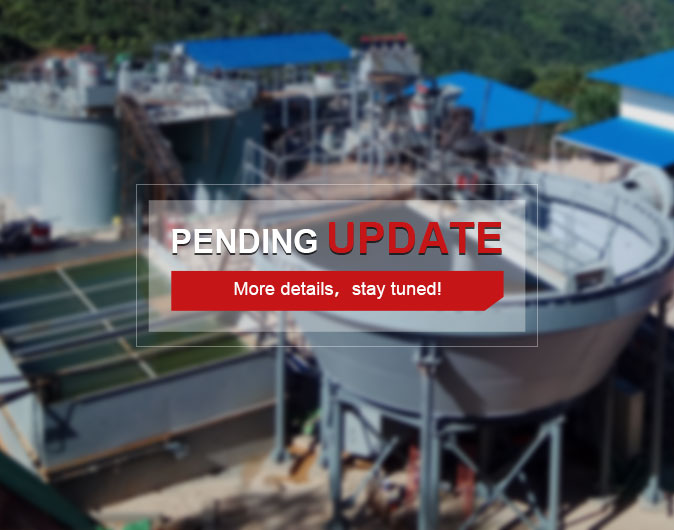
The main metallic minerals in the ore are pyrite, sphalerite, pyrrhotite, galena. Non-metallic minerals are mainly dolomite, calcite, quartz, wollastonite.
The stage of crushing and screening: Used two-and-half-stage and one closed-circuit crushing and screening process. A vibrating feeder was installed at the bottom of the primarybin, which was transported minerals to the jaw crusher by a belt conveyor for coarse crushing. After coarse crushing, the ore was transported by a belt to a double-layer circular vibrating screen for screening. The material on the upper screen entered the jaw crusher for intermediate crushing, and the intermediate crushed products and the screening intermediates were transported by the belt conveyor to the hydraulic cone crusher for fine crushing. The finely crushed product and the coarsely crushed product were transported to the circular vibrating screen by a belt to form closed-circuit crushing. The screened qualified materials (12 mm) were transported to the powder ore bin by the belt through the transfer station.
Grinding and grading stage: two series totally, the following was a single series description. Used the process of one-stage closed-circuit grinding + Zinc-sulfur bulk flotation+ Zinc-sulfur separation flotation. Ores with qualified size in the powder ore bin were transported to the belt conveyor by vibrating feeder. Ores were sent to the grid ball mill by the belt conveyor for grinding, and products were sent to linear vibrating screen for screening. The large particles left on the screen were sent back to the ball mill by the belt conveyor. The pulp under the screen was pumped into the hydrocyclone for grading, and the underflow returned to the ball mill to form a closed-circuit grinding. The grinding fineness was 200 mesh, accounting for 72%.
The hydrocyclone overflowed into the high-efficiency stirred tank to stir with reagents. After stirring, the pulp began its Zinc-sulfur bulk flotation including two-roughing, two-scavenging and three-concentration. It used XCF-8 and KYF-8 flotation cells for roughing I and II; SF-4 flotation cell for roughing I、II、III; XCF-8 and KYF-8 flotation cells for scavenging I and II. And the middlings went back to the stirred tank.
The bulk flotation concentrate flowed into the pulp stirred tank to stir with reagents. After stirring, the pulp began its Zinc-sulfur separation flotation including one-roughing and two-scavenging. The SF-4 flotation cell was used for the roughing, concentration I and II, scavenging I and II. Flotation tailings was pumped into the tailings dry-discharge workshop.
The stage of concentrate dehydration: Sulfur concentrates could flow to the settling pond for dehydration due to the small yield. Flotation of zinc concentrates was dehydrated by means of a thickener + filter press. The thickener was for concentrating and the membrane box-type filter press was for filtration. The water content of the concentrate was about 12%. The overflow water and filtrate could be returned to the production system.
The dehydration stage of tailings: It used the cyclone + dewatering screen + thickener + filter press for dry-type discharge in the part of flotation tailings. Flotation tailings was pumped into the stirred tank to neutralize pulp conditioning. After pulp conditioning, flotation tailings was pumped into the concentrated cyclone by the wear-resistant slurry pump for grading and concentration, overflowed into the Φ20m thickener (tailings) for thickening. The underflow in the cyclone flowed into the dewatering screen for dehydration. Products on the screen were transported to the aerated brick workshop by a belt conveyor, and the materials under the screen flowed into the Φ20m thickener. The underflow in the thickener was pumped into the filter press respectively, and the filter cake was transported to the aerated concrete block workshop by car.
In this project, the productivity of the zinc concentrate was 11.96% and the sulfur concentrate was 11.57%.
Please leave your message here! We will send detail technical info and quotation to you!
© 2020 Shandong Xinhai Mining Technology & Equipment Inc.
